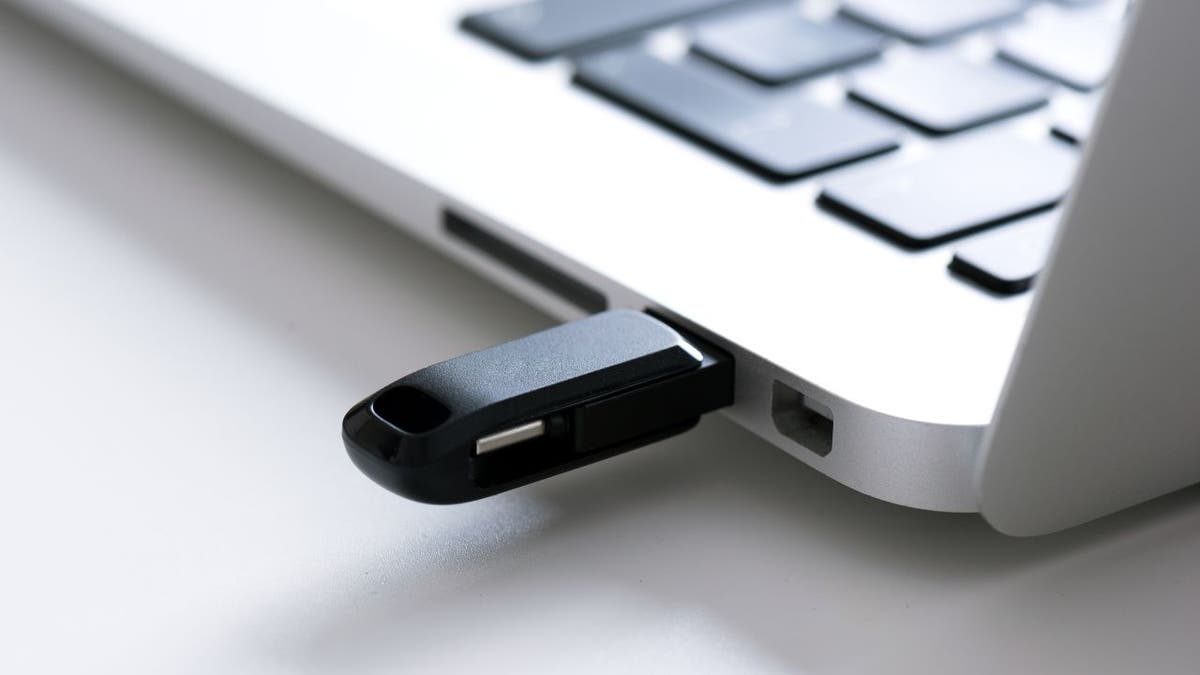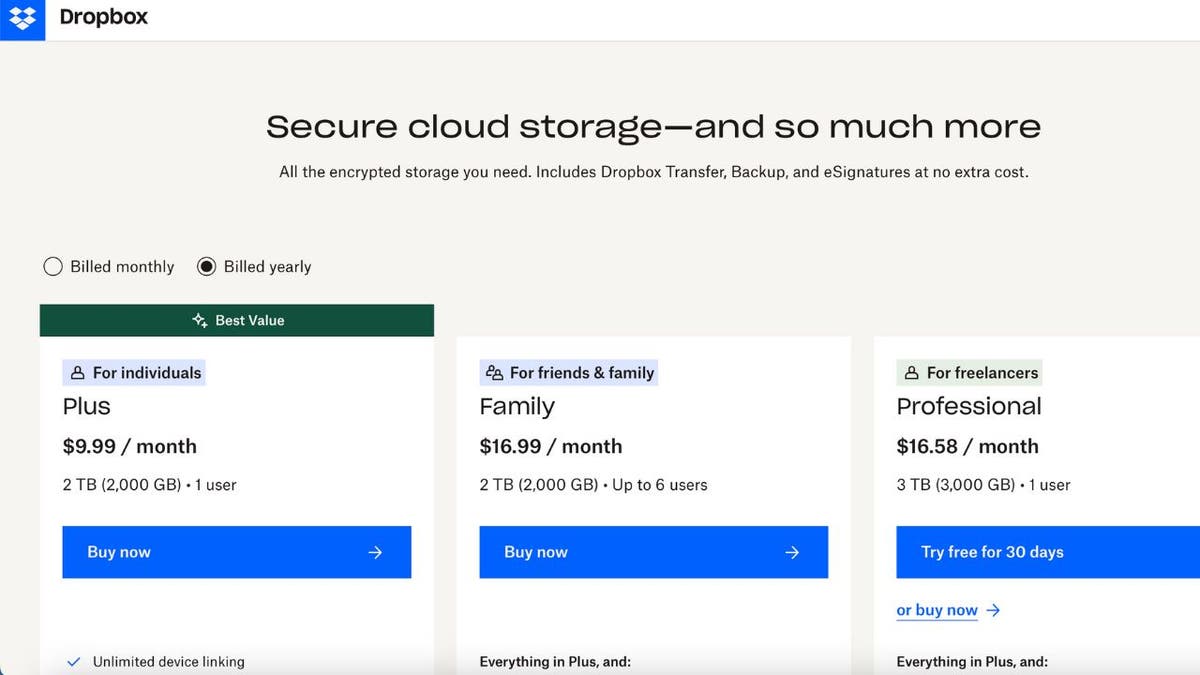
Many people with Apple devices use iCloud to store their photos, but what if you want to free up some space and download them to a portable drive instead of paying more money out of pocket for additional iCloud storage?
CLICK TO GET KURT’S FREE CYBERGUY NEWSLETTER WITH SECURITY ALERTS, QUICK TIPS, TECH REVIEWS AND EASY HOW-TO’S TO MAKE YOU SMARTER
This is a common problem that people like Larry from Marshville, North Carolina, are facing. That’s why I love it when people send in great questions to this tech reporter who’s been on this beat for 20+ years. Here’s what he’s asking that you too might relate to:
“I want to EMPTY all the photos from my iCloud account onto a big thumb drive. They have filled my 5GB of iCloud space and I refuse to spend more per month on photos that I already have on my desktop and my iPhone. What are my options?”
I understand how frustrating it can be when your cloud storage space fills up and you can’t add new photos to it anymore. However, there are some simple solutions for Larry and those who are in a similar situation as he is. Let’s go over some options you can try to store your photos safely and conveniently.
How can I download photos from my iCloud to a thumb drive?

Flash drive inserted into the laptop (Cyberguy.com)
DON’T FALL FOR THIS NEW ROUND OF ICLOUD SUPPORT SCAM EMAILS
Downloading your iCloud Photos to a portable drive is quite simple, and you can do so by following these steps.
Transferring photos from iCloud storage to a thumb drive
- Access your cloud storage location from a workstation (PC, Mac, Chromebook, etc.).
- Plug in your hard drive or your thumb drive into one of your devices ports.
- Go to the official website of iCloud and log in with your Apple ID.
- Click Photos on the homepage.
- Select the photos and videos that you want to transfer to your device.
- Click the download button in the upper-right corner (it looks like a cloud with an arrow pointing down), and in the left-hand panel of your finder window, locate the hard drive or thumb drive that you plugged into your device and select it.
- Click the save button and now your media will be saved to your device.
What thumb drive can I use?
If you want a quick and portable solution to bring your media with you on the go, there are many thumb drives that you can purchase that will allow you to store tens to hundreds of thousands of photos and videos on them (depending on storage capacity). One affordable and reliable solution perfect for Larry’s needs is the Amazon Basics 256GB USB.

Basic Amazon flash drive (Amazon)
AMAZON TO OFFER VIDEO TELEMEDICINE AT ITS VIRTUAL CLINIC
With the 256 GB Amazon Basics flash drive, you can store up to 64,000 12MP photos or 978 minutes of 1080P video recording, so it’s safe to say it’s a pretty great pick. It runs 15 times faster than 2.0 flash drives and has high-quality NAND FLASH flash memory chips that can effectively protect your data security. At the time of publishing, this product had over 3,900 global reviews, with 76% giving it 5 stars.
Get Amazon Basics 256 GB USB
Is cloud storage worth paying for?
I understand that paying for more cloud storage may not be an option for everyone. You may have other financial priorities or constraints that prevent you from spending more on this service. However, if you can afford it, I would recommend that you consider upgrading your cloud storage plan. It can offer you many benefits, such as:
- More space for your photos and other files.
- Automatic backup and sync across devices.
- Access to your data anytime and anywhere.
- Enhanced security and privacy features.
- Reduced risk of losing your data due to device damage or theft.
These are some of the reasons why cloud storage is a valuable investment for those who can fit it into their budget.

Woman at her Computer and latptop looking at images (Cyberguy.com)
HOW TO TRANSFER PHOTOS, VIDEOS FROM YOUR EXTERNAL HARD DRIVE, APPLE DEVICES
Comparing cloud storage plans
Let’s go over a few cloud storage options, what their prices are, and what exactly you’ll be getting with those higher prices.
iCloud+
Every Apple device comes with iCloud, and you get 5 GB of storage for free. With iCloud+, you pay an extra subscription fee to get more storage space and some enhanced privacy features. iCloud+ has 3 options to choose from:
- $0.99/month for 50 GB.
- $2.99/month for 200 GB.
- $9.99/month for 2 TB.
Each of these plans also includes excellent privacy features like iCloud Private Relay, Hide My Email, Custom Email Domain and HomeKit Secure Video.
Explore iCloud+
Google One

if you’re looking to get more storage, you should consider getting a Google One (Google)
GOOGLE SECURITY CHECK: 60 SECONDS TO KICK OUT SNOOPS AND HACKERS
Anyone can use Google Drive to store their photos, videos, and other files for free, and you get 15 GB of storage with that initial plan. However, if you’re looking to get more storage, you should consider getting a Google One subscription. Like iCloud+, Google One also offers 3 plans to choose from:
Basic: 100 GB of storage for $0.49/month for three months and $1.99/month after (at the time of publishing).
Standard: 200 GB of storage for $0.75/month for three months and $2.99/month after (at the time of publishing).
Premium: 2 TB of storage for $9.99/month, billed monthly (at the time of publishing).
All three of these plans offer access to Google experts, sharing with up to 5 people, more Google Photos editing features, a VPN for multiple devices, and a monitor for the dark web.
Explore Google One
Dropbox
Dropbox offers a variety of plans based on whether you want to use it for personal or business reasons. For personal use, Dropbox offers the following plans:
Individual: $9.99/month for 2 TB of storage (1 person).
Family: $16.99/month for 2 TB of storage (up to 6 people).
Each of these plans also gets unlimited device linking, a 30-day file and account history, large file delivery with Dropbox Transfer, and 3 free eSignatures per month. The Family plan also includes individual accounts for up to 6 people, access to a Family Room folder for each group sharing and coordination, and a single bill for the whole family.
If you want to use a Dropbox subscription plan for business purposes, here’s what the company offers:
Professional: this plan is for freelancers and costs $16.58/month for 3 TB of storage.
Standard: this plan is for smaller teams and costs $15/user/month for 5 TB of storage.
Advanced: this plan is for larger teams and costs $24/user/month, and you can get as much space s needed once purchased.
Enterprise: this plan is for organizations, and pricing varies. You can contact the Dropbox Sales department for pricing.
Each of these plans also gets easy-to-use content protection and external sharing controls, recovering files or restoring your entire account for up to 180 days and automatically backing up computers and connecting external drives directly to the cloud.
Explore Dropbox

Dropbox is a storage box for your digital files (Dropbox)
GOOGLE IS ABANDONING YOUR OLD ANDROID PHONE: HERE’S WHAT YOU NEED TO DO
Amazon Photos
Prime members get free, unlimited, full-resolution photo storage and 5 GB video storage. However, if you need more storage than that, Amazon offers tons of plan options that can fit exactly what you need. Here are your options:
- 100 GB of storage for $1.99/month.
- 1 TB of storage for $6.99/month.
- 2 TB of storage for $11.99/month.
The rest of the plans offered do not have monthly payment plan options, only annual payment plans. The cheapest one is 3 TB of storage for $179.97/year, and the most expensive is 30 TB of storage for $1,799.70/year. Amazon does not specify on its pricing page if any of these plans come with extra perks like data encryption or other Amazon perks.
Explore Amazon Photos
Kurt’s key takeaways
The bottom line is that if you run out of storage on your cloud service, there are numerous other options for you to choose from that will allow you to store everything you need successfully. Take a look at what you can budget each month and what each cloud service can offer you, and if you can spend a little extra cash, I’d recommend expanding that cloud plan so that all your files can remain in one safe place. If you want to avoid recurring costs altogether, you may consider investing in a thumb drive as your primary storage device.
Are cloud storage prices getting too high? Do you think people should revert back to printing photos and keeping them in albums? What feels more worth it to you? Let us know by writing us at Cyberguy.com/Contact
CLICK HERE TO GET THE FOX NEWS APP
For more of my tech tips and security alerts, subscribe to my free CyberGuy Report Newsletter by heading to Cyberguy.com/Newsletter.
Got a tech question? Ask Kurt here.

 Latest Breaking News Online News Portal
Latest Breaking News Online News Portal




